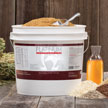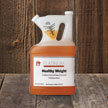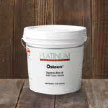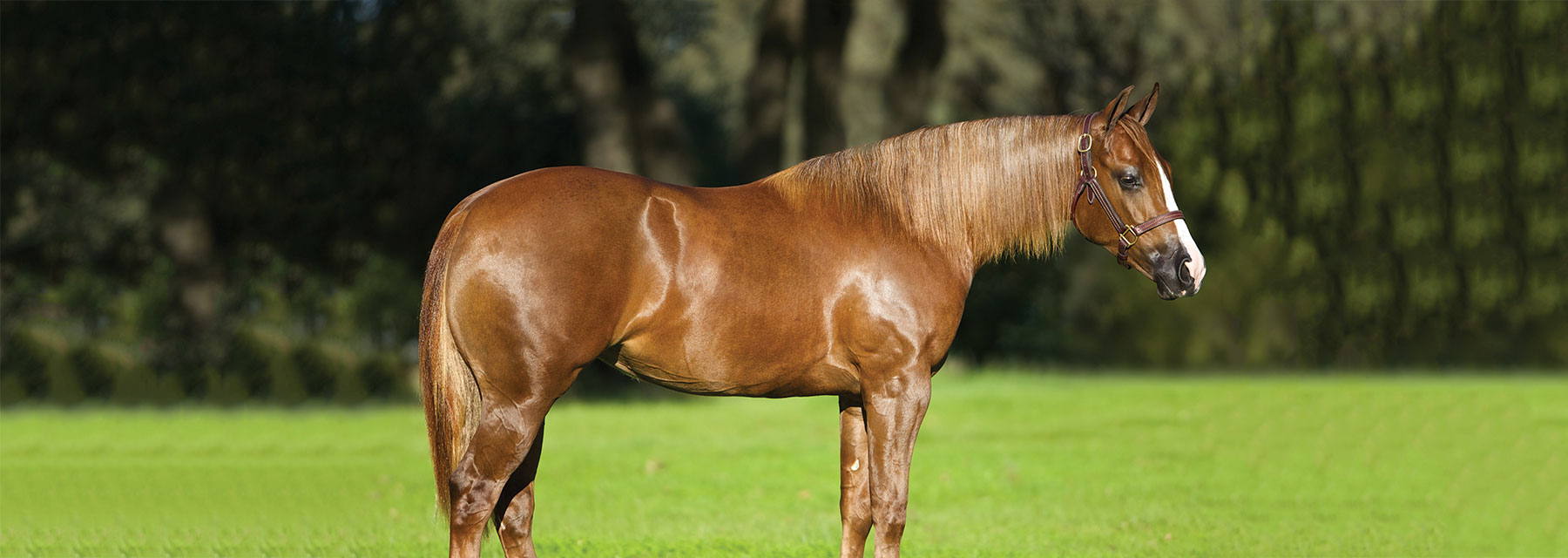Preparing Horses for Sales from the Inside Out
Preparing a young horse for the sale ring is an exciting and demanding journey. General health management programs, such as timely vaccination and deworming schedules are incredibly important. Increased exercise is needed to appeal to contemporary buyers keen on the athletic image, as chubby youngsters of yesteryear have been replaced with a preferred lean, muscled appearance. The team that puts in the effort caring for sale horses commits an immense amount of time and elbow grease into transforming rough-coated babies into gleaming, fitted athletes-to-be. The diet plays a significant role in getting horses physically prepared, and balance is the key to unlocking the perfect blend of youth just meeting maturity on sale day.
“We started using Platinum Performance Equine in our foals at weaning and have noticed a vast improvement in their overall health and condition.”
— Christina Kirby,
Breeding Manager at Colt Ventures — Home of Leading Cutting Horse Sire “High Brow Cat” (1988-2019)
But First, Forage
The dietary goal is to meet the nutrient requirements of the horse. There is never a better time than sale preparation to rely heavily on quality forage. When sales prep begins, many young horses will be switched from full turnout on pasture to night-only turnout (or even more limited access) to prevent coat bleaching and allow for easier management and handling. A nutritional benefit of this is that it is much easier to tailor diets to the individual, depending on whether they are needing more body condition and general calories or are gaining weight too quickly, etc. Type and quality of forage is very influential in providing most of the energy, protein and mineral content critical to horses that are still growing, such as weanlings and yearlings. High-quality, high-energy hays are recommended for the majority of young horses preparing for sales as they offer increased calories to support condition demands, high fiber content to support normal digestive motility and starch levels are typically very low.
To facilitate an increase in body condition, alfalfa hay or an alfalfa blend mixed with immature grass hay is an excellent foundation. An early cut hay will have lower levels of lignin, the indigestible part of the plant, and offer higher digestibility. This is important to prevent the “pot-bellied” appearance sometimes seen when feeding a mature, more indigestible cutting of hay. A hay analysis can be very useful to know the actual content of the hay and give concrete numbers of calories per pound, protein and lysine content, mineral levels and starch and sugar percentages. Some growing horses, particularly fillies, fill out too quickly on a rich hay and may need a more mature cut or blend to avoid excess weight gain. Regardless of weight, horses that are stalled should have access to hay as much as possible to support normal motility of the digestive tract, decrease the possibility of ulceration and alleviate boredom. Free choice access is ideal. For those that gain weight too quickly, consider a slow feeder which will stretch out the quantity yet still emulate grazing and its consistent fiber trickle in the digestive tract.
Weight & Body Condition
Body condition is a high priority when getting horses ready for sales. Buyers currently favor young horses that look like smaller adult versions of themselves with the fitness, muscling and weight that gives the picture of what they might look like walking right into the showpen. Caution must be taken to avoid putting excess weight on young horses as they are still growing and developing. This is especially true for weanlings headed to sales who are still undergoing rapid bone and soft tissue formation and are more at risk for developmental orthopedic disease linked to high starch diets and rapid skeletal growth. A natural source of bio-available silicon supports developing bone and soft tissue and may be beneficial supplemented to young, growing horses through prep season.
A body condition score of 5 is ideal where ribs cannot be seen but can easily be discerned at the touch. If more body condition is needed, super fibers like beet pulp and soybean hulls, or feeds that contain a base with these, can be a way to add healthy calories as they contain a high percentage of digestible fiber, more calories than hay, yet still have a significantly lower starch level compared to classic cereal grains like oats, corn and barley. Fats, like healthy flaxseed oil, are another way to add more calories to the diet. High concentrate diets with cereal grains fed in large meals should be avoided as it can cause a starch overload that can precipitate diarrhea, laminitis, colic as well as high-strung horses. If a grain concentrate is to be used in the sales prep program, look for one with a beet pulp base with a high fiber, high fat content and a low percentage of sugars and starches combined (less than 12% total). Also, breaking the total quantity of concentrate fed into several smaller meals throughout the day may lower the risk of starch reaching the hindgut and is less likely to cause gastrointestinal upset. Probiotics that contain strains of beneficial bacteria like Saccharomyces boulardii and Saccharomyces cerevisae help with general hindgut health, maintain healthy levels of intestinal inflammation and increase feed efficiency. Adding a prebiotic and probiotic supplement can help get the most out of any feeding program.
Many horses preparing for sale need to add condition, however, others do not. This is especially true for some fillies who tend to fill out more easily than colts. Body condition for all sale horses should be evaluated at two week intervals, so feeding adjustments can be made as needed. Each horse should be fed as an individual, with special attention focused on body condition and steady weight gain and adjusting feed intake as necessary.
Sale Prep Checklist
Total Wellness
Platinum Performance® Equine provides nutrients for every part of the horse, delivering omega-3 fatty acids, antioxidants, amino acids, vitamins and trace minerals for comprehensive support.
Bones & Soft Tissues
Osteon® offers a natural, highly bio-available source of silicon called zeolite, which promotes the development, growth and maturation of bones and other connective tissues.
Body Condition
In addition to free choice access to quality forage, healthy oils from flaxseed, such as Platinum’s Healthy Weight oil, can be used as an additional source of cool-burning calories to promote weight gain.
Shiny Coat
The omega-3 fatty acids in Platinum Performance® Equine and Healthy Weight oil provide nourishment producing a gleaming, healthy coat from the inside out.
Muscle Up: Protein
The quality of a protein is determined by the amino acid profile. The higher the quantity provided by a certain protein of specific amino acids, such as lysine, methionine and threonine, the higher the quality is considered. Percentage of overall crude protein from a supplemental feed like grain should be noted but not considered the final word on protein as the majority of dietary protein will be provided by a good quality forage. For example, legume hay, such as alfalfa, contains an average of over 20 percent crude protein. It is literally packed with protein and other essential nutrients for developing muscles. Protein has historically been the hero of a sales prep diet, but overfeeding protein without enough energy/calorie content makes an expensive diet that will not put weight on a horse. Protein needs, and particularly lysine, must be met, but they are a metabolically inefficient way to put weight on horses compared to fats and carbohydrates. Supplementing for muscle tone and definition with anabolic nutrients like HMB and gamma oryzanol has been shown to be effective in supporting lean muscle and topline tone.
Shine Baby, Shine: Fats
Every sale horse looks best with a healthy shine to their coat. Meeting dietary requirements of all nutrient classes is the first step towards a shiny, healthy coat. Specific fats, like omega-3 essential fatty acids, are an excellent way to stimulate a shiny hair coat. Slick and shiny coats are really a byproduct of the internal benefits that omega-3 fats provide as they offer systemic benefits that help with digestive support and feed efficiency, and provide hoof and joint benefits. Fresh grass is also an excellent source of omega-3 fats. As horses preparing for sale are often limited to pasture access, an omega-3 fatty acid supplement or an oil high in omega-3 content, such as flax oil, are easy and palatable ways to incorporate omega-3 fatty acids into the diet. As little as 1/8 cup twice daily (2 oz) of flax oil can support skin and coat health. This amount can also be increased as needed for extra calories and to support weight gain and body condition. Fat in general, including oils, is an efficient and healthier alternative to starchy grains to add more calories into the diet.
It takes many months to get a horse fully prepared for the sale ring. Feeding each horse as an individual and making adjustments along the way ensures nutrient needs are being met and body condition stays in a healthy range. Special attention to the details of the diet is the scaffolding for healthy horses that shine from the inside out on sale day.
Sale Prep Protocols
Getting Young Horses Nutritionally Prepared for the Sale Ring

|
Platinum Performance® Equine | A comprehensive blend of omega-3 fatty acids, amino acids, vitamins, minerals and antioxidants to support total body health. |
Yearlings to Adults: 1 scoop twice daily Weanlings: 1/2 scoop twice daily |

|
Healthy Weight | A flaxseed oil infused with vitamin E to support a healthy, shiny coat and facilitate weight gain. |
For Coat Health: 1/8 cup twice daily For Weight Gain: 1/4 to 1/2 cup twice daily |

|
Osteon® | A highly bio-available source of silicon to support growing and developing bones and soft tissue. |
Yearlings to Adults: 1 scoop twice daily Weanlings: 1/2 scoop twice daily |

by Emily Smith, MS,
Platinum Performance®
